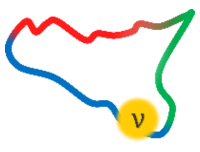Speaker
Description
M. Giovannini1,2, on behalf of the NUMEN Collaboration
DCCI, University of Genova, Via Dodecaneso 31 - 16146 Genova, Italy, mauro.giovannini@unige.it
2 INFN - Sezione di Genova, Via Dodecaneso 33 – 16146, Genova, Italy
The NUMEN experiment, hosted at LNS (Catania, Italy), aims to determine the Nuclear Matrix Elements (NMEs) involved in 0νββ decay via heavy-ion induced Double Charge Exchange (DCE) reactions. High intensity beams of about 50 μA and of energies ranging from 15 to 60 MeV/u
are necessary, due to the low DCE cross sections, and the use of very thin targets (several hundreds of nm) is needed to have an energy straggling such as to allow a good resolution in energy (< 500 keV). These intense beams produce a considerable amount of heat inside the target (about two order of magnitude higher than the one released in a target for nuclear experiments), which can be dissipated by depositing the targets on a highly thermally conductive substrate. The choice of a proper substrate between different graphite films is one of the critical issue for the success of the NUMEN experiment. The ideal substrate for the NUMEN experiment should have high thermal conductivity (1400-2300 W/(mK)), a thickness around 2μm and a good thickness uniformity in order to minimize the impact on the energy resolution of the reaction products.
In this work a comparison between different graphite foils, prepared by different processes, is made through a characterization by X-Ray diffraction (XRD), Raman and scansion electron microscopy (SEM). Moreover, Rutherford Backscattering Spectroscopy (RBS) and Alpha Particle Transmission (APT) have being used to quantify thickness and uniformity.

